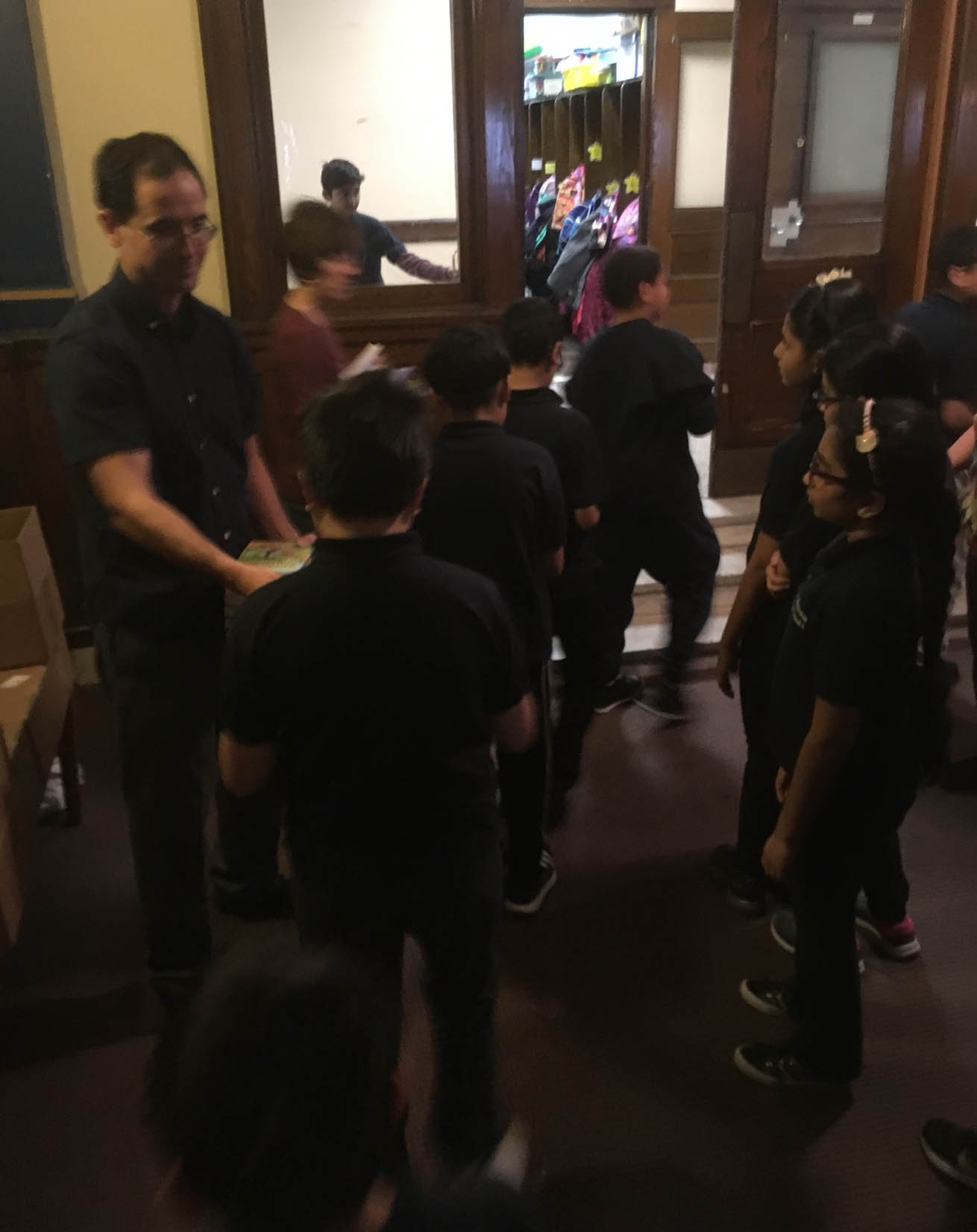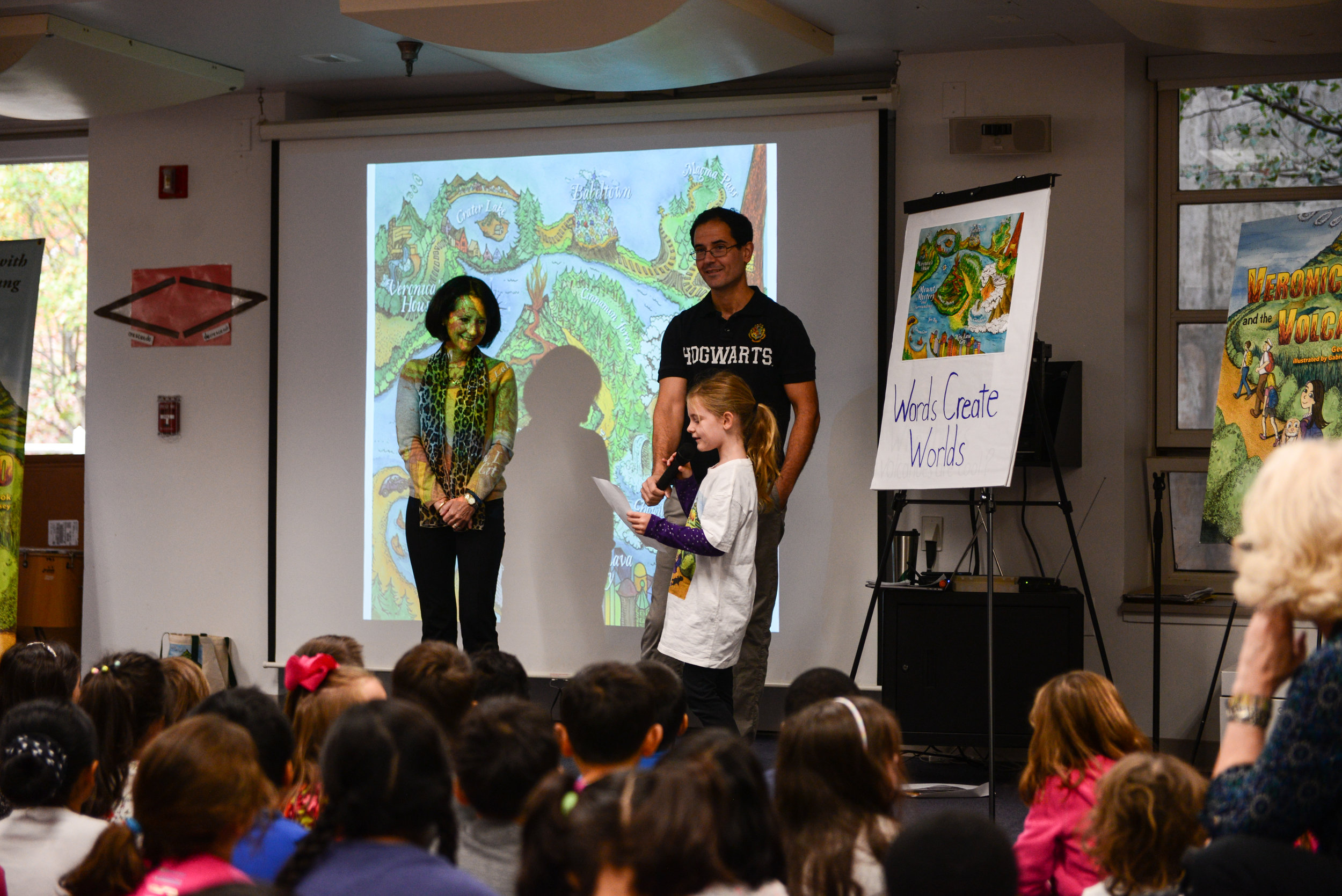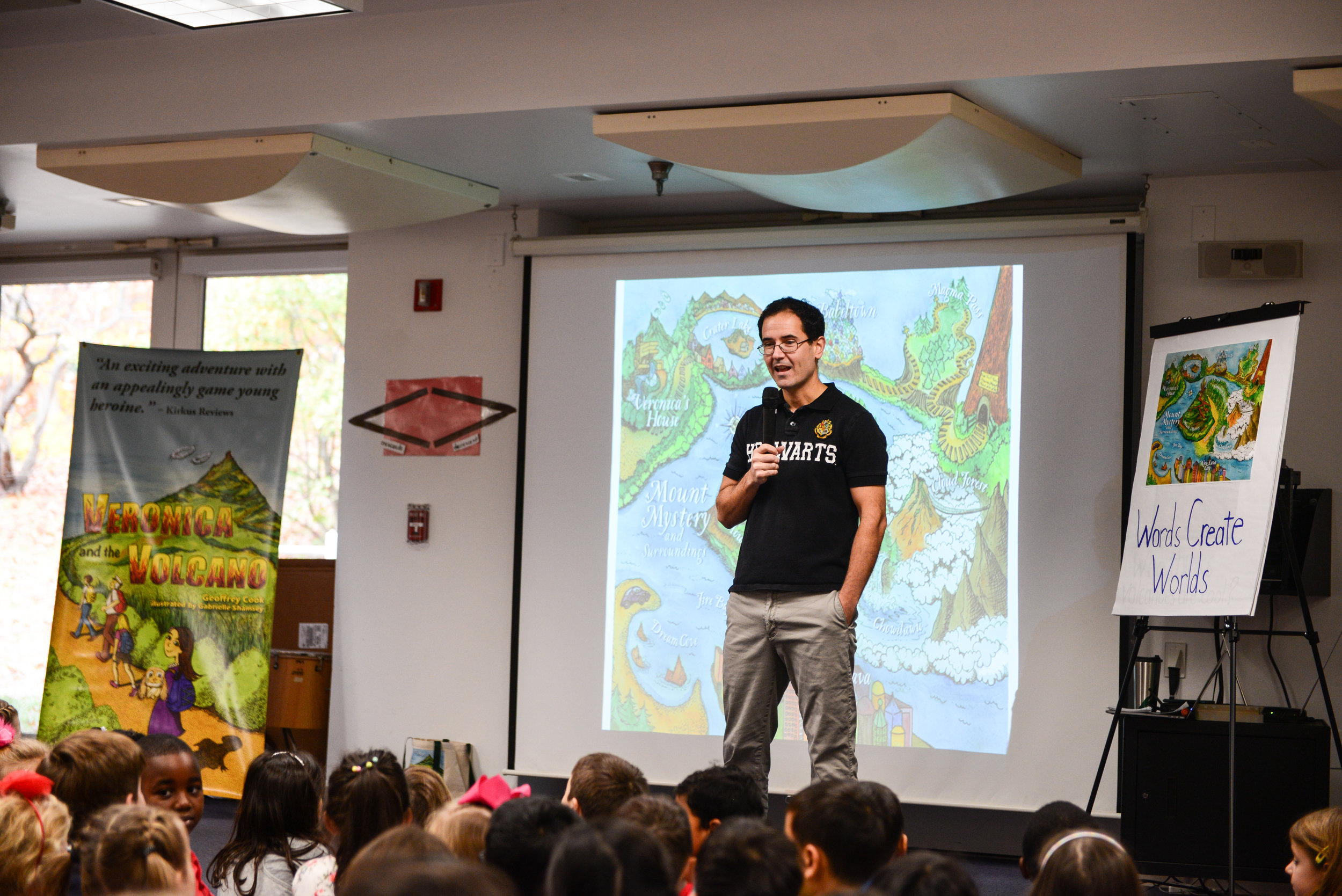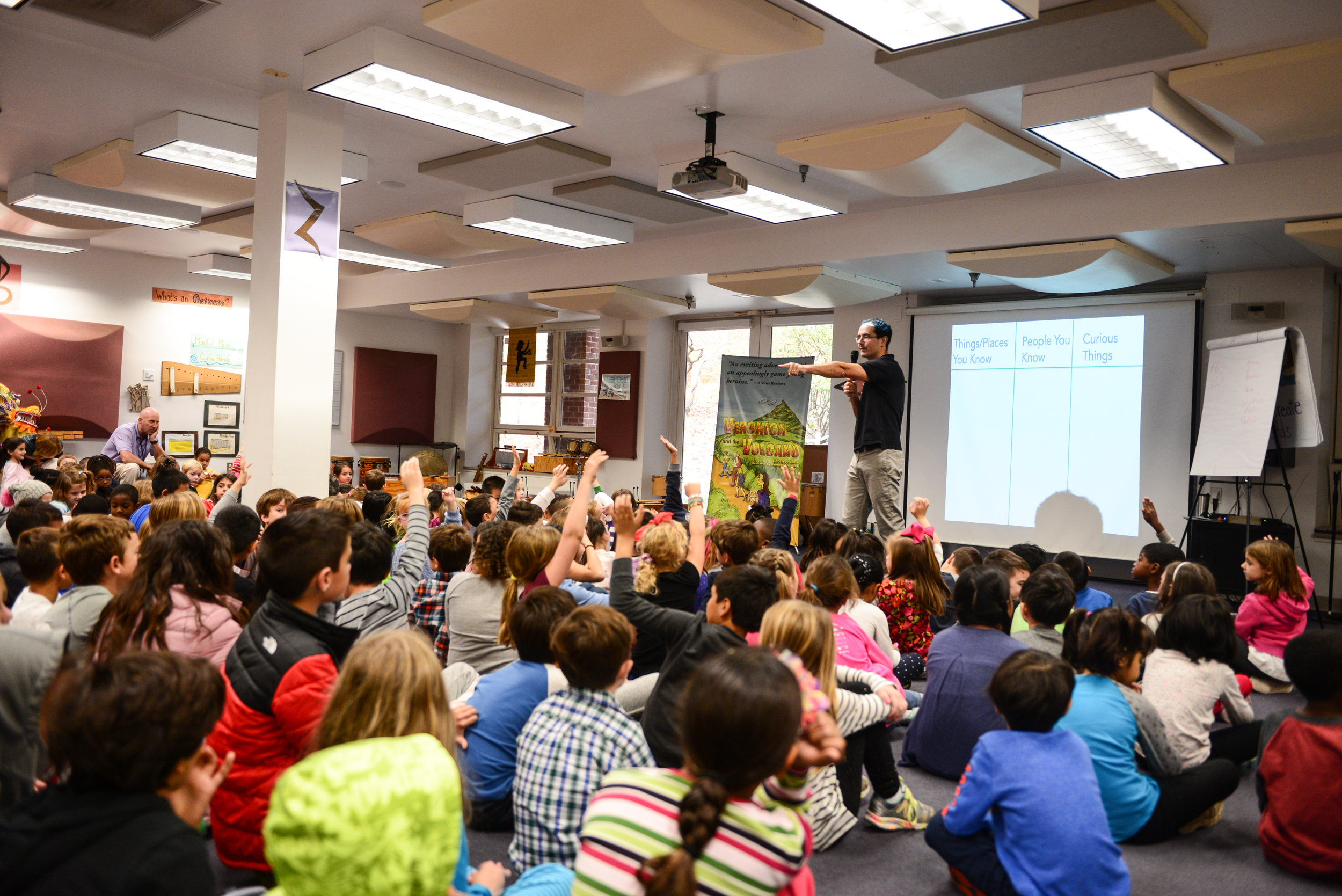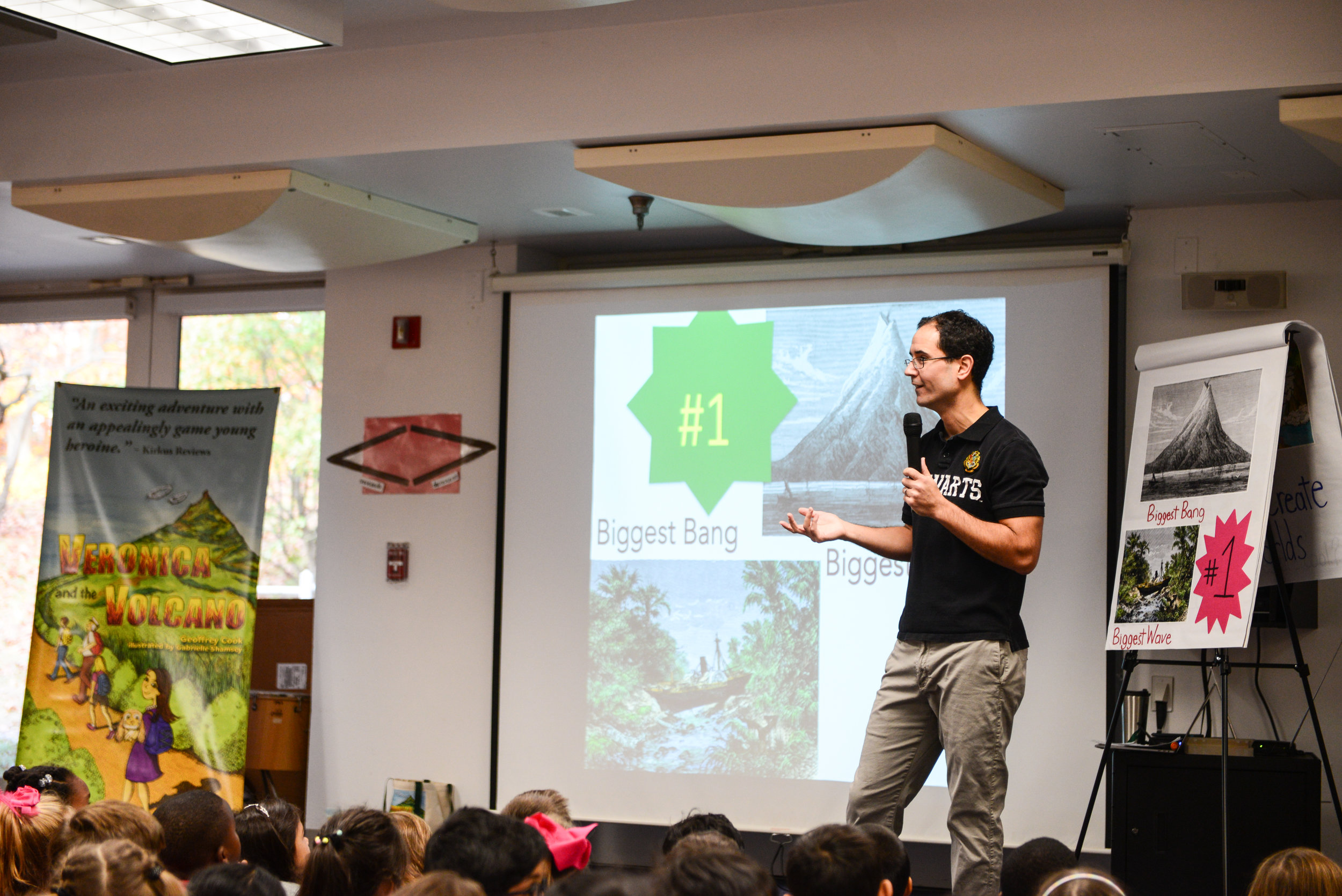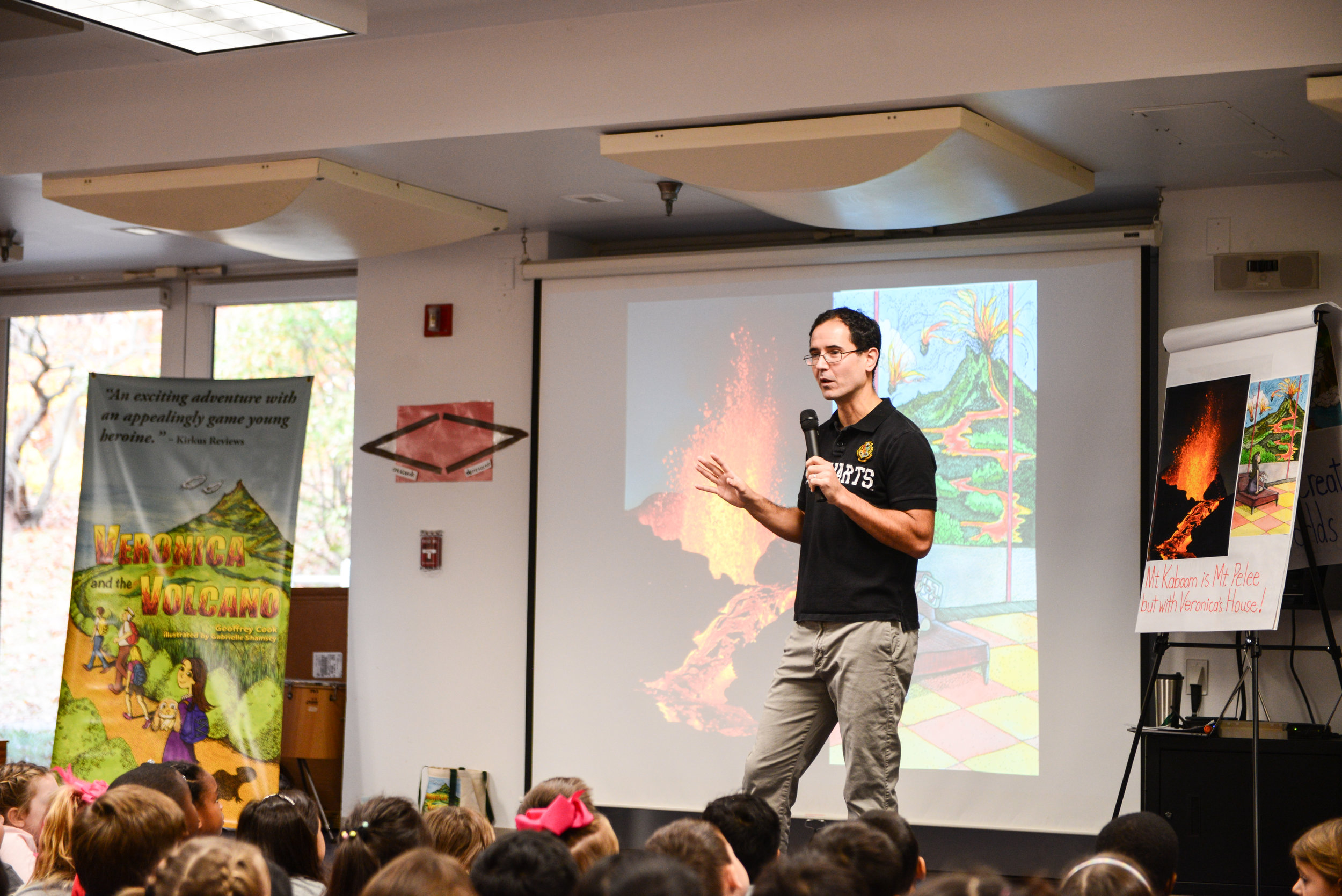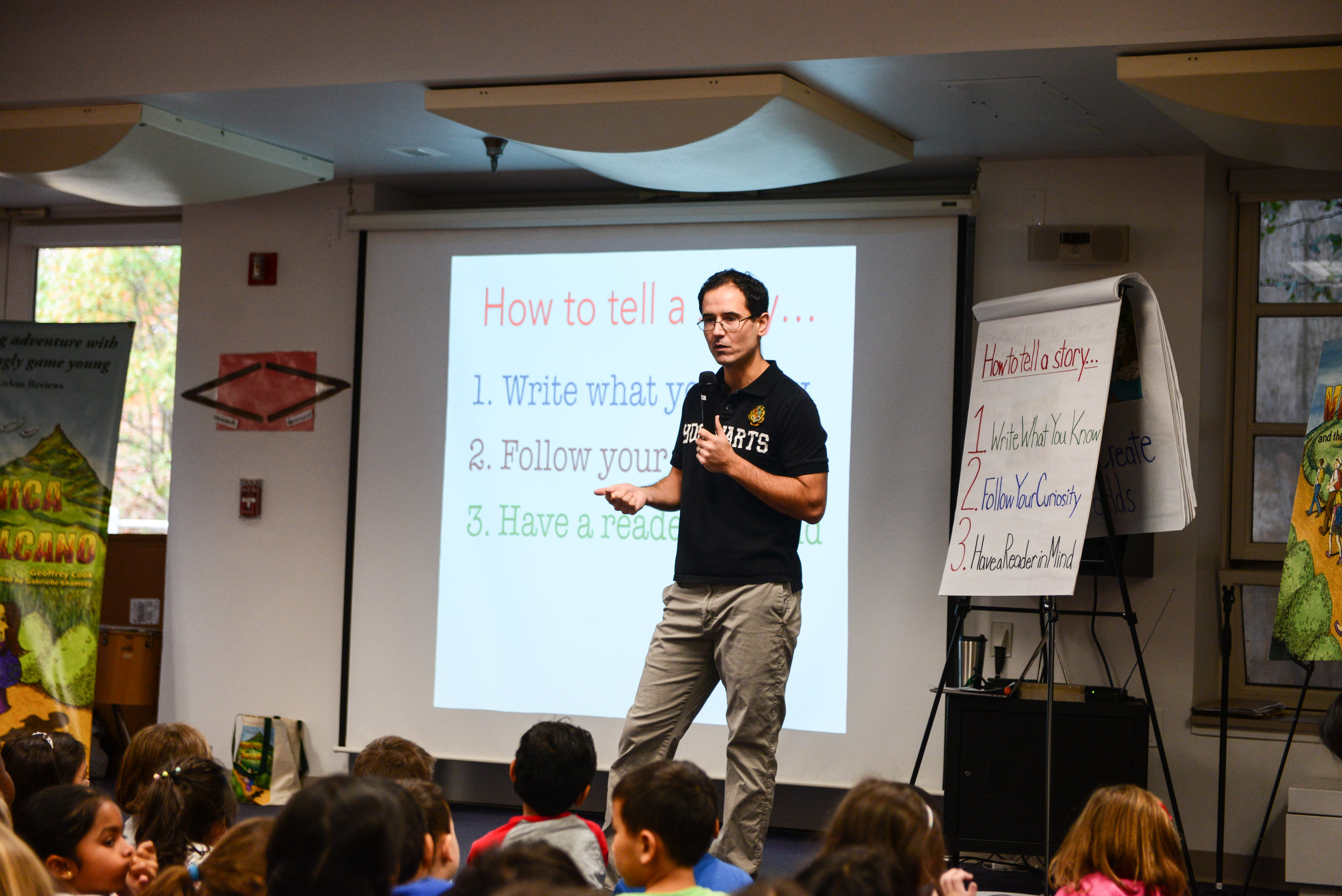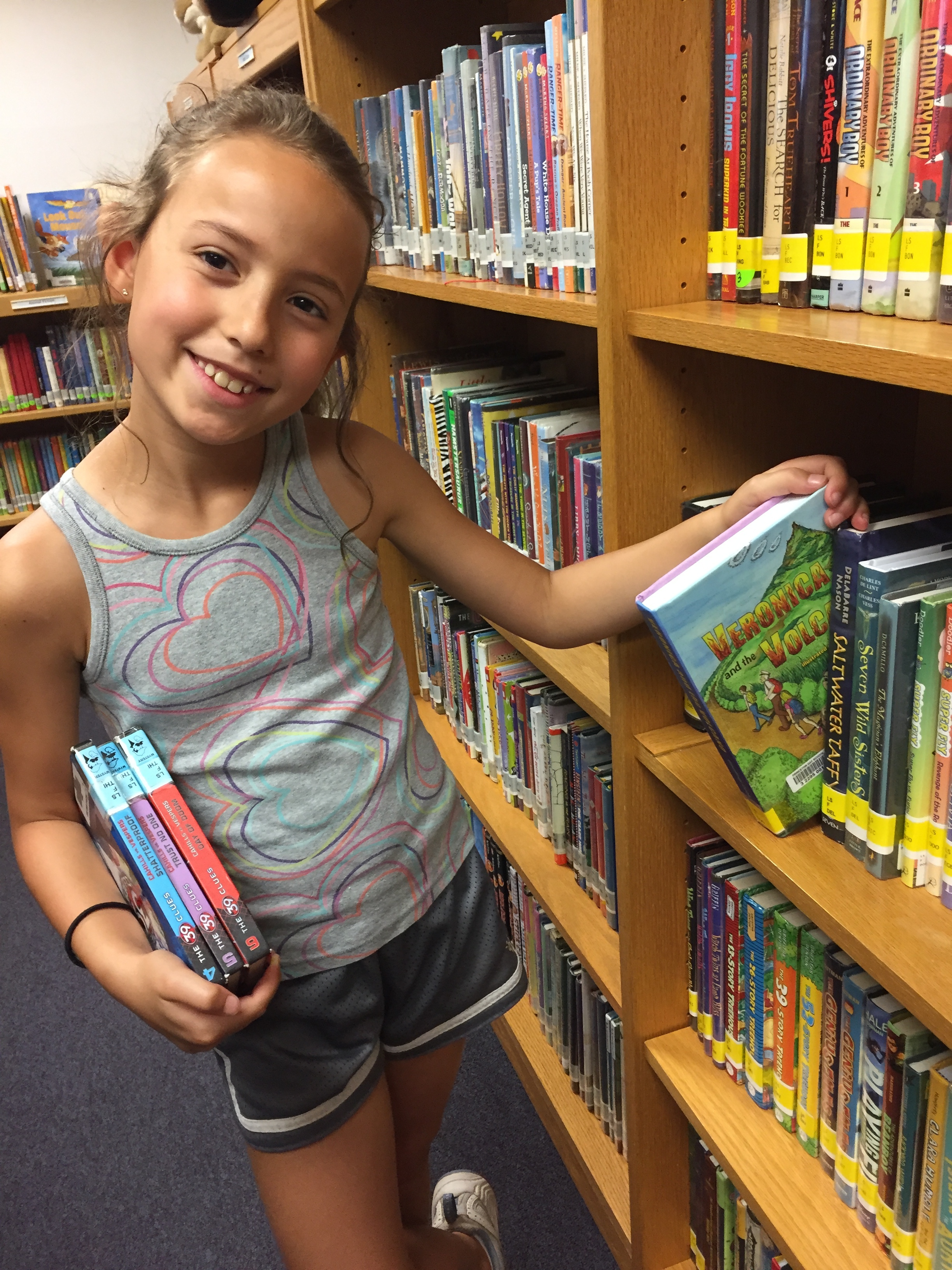I love Jersey City! What a great bunch of kids with awesome questions ... and I love anyone who loves Veronica :)
Lord Stirling Elementary Loves Veronica
A fun assembly on Following Your Curiosity to a great group of kids at Lord Stirling Elementary School in New Brunswick :)
A Great Day Presenting at PDS
Nothing beats a chance to present to some great kids about following your curiosity :)
Follow Your Curiosity
“It is beauty that will save us in the end.” — John O’Donohue
How many times do we tell our kids to “follow their passion.” But who really has a passion for anything — especially at the beginning? “Passion” is what other people think you have when you “Follow Your Curiosity.”
People might think I followed my passion for writing, or for science, because I just finished a 320-page middle-grade novel called Veronica and the Volcano. But here’s the funny thing … I don’t have a passion for either.
I followed my curiosity.
My book started as a bedtime story I would tell my daughter Madeline about a young girl who lives on the side of a volcano, because Maddy loved volcanoes. She wanted a new story every night, and soon, she wanted a new one every morning too, on the 25-minute drive to school.
But let me tell you: It’s not easy to tell a story for 25 minutes every morning. So, I started researching volcanoes. I read Simon Winchester’s Krakatoa. That made me even more curious. I started reading the books in his bibliography too. I learned about lava tubes, about blue lava, about St. Elmo’s fire. I read first-hand accounts of the eruptions of Mt. Pelee and Tambora. My stories for Madeline got better. The book was born.
At first, I thought I was writing a poem. A few thousand words later, I decided it was chapter 1.
The secret to writing a book is this: Write What You Know AND Follow Your Curiosity. In every scene of every chapter I weaved my curiosity for volcanoes with what I know best: my family and friends. The characters are based on real people in my life, like Captain John of Lake George, NY who captains the iconic steamboat the Minne-Haha, and his son-in-law Officer Steve, and, of course my daughters, Madeline and Elyse.
A strange thing happens when you follow your curiosity. Soon what you’re curious about becomes what you know. It’s a beautiful cycle that has no limit. It is the essence of human potential. Einstein said that imagination is the greatest force in the universe. He followed his curiosity about ticking-clocks and light beams to imagine that a star could bend light and that gravity itself is the curvature of spacetime.
We are no Einsteins, but we imagine our own worlds. Words create worlds. Our kids hear stories every day, whether they are reading books or not. They hear mean stories about how some people are less than other people. They tell themselves stories about how they’re not good enough. And in time, those stories take root … we are the stories we tell.
So give your kids stories to fight back with. Tell them soaring stories, stories that make them curious, stories that reward difficulty and pain, stories that shine a light on the marginalized, stories that prize kindness, stories that revere nature and this most mysterious place we call the universe.
How To Raise Kids Who Care About STEM
Republished based on article I wrote that originally appeared on HowtoLearn.com
Where does the light go when the candle is blown out?
That’s just one of the questions I ask my second-grade daughter, Elyse, every morning before school. I write a single question on a note card and put the card in her backpack. That one got through. She talked about the question at dinner. She asked me about it two weeks later.
I told her the scientific answer, that light is really photons, kind of like particles of light, and that when the candle burns, energy from the candle converts to photons, but that when the candle is blown out, those photons keep traveling until they bounce into something and are absorbed.
But I also told her we really don’t know the answer. Why is there darkness and light? What is darkness? What is light? We still don’t know. It was only two hundred thousand years ago that we climbed out of trees and started walking upright. We still have a lot to learn.
Now we know that stars bend light and that gravity is the curvature of space-time. Yet still, we know almost nothing. Science can’t even say what light is. Even Einstein, who knows the most about light of any member of the homo genus in the last three million years, admitted: “All the fifty years of brooding have brought me no closer to the answer to the question 'What is light?'”
That’s why I ask Elyse hard questions, because maybe one day she’ll figure it out. Kids need to know how much we don’t know. Elyse asked me recently, “How do birds know to change direction at the same time?” I nearly teared up.
I praise her questions, because the question is a lantern. If you can ask a good question, you almost have the answer. Nature reveals itself through questions. Science is the answer to those questions. That these questions have answers that we can understand is the eternal mystery of the world. Good questions are the heart and the art of science, and the questions we don’t ask are the measure of our ignorance.
Each morning, I also write a note card to my fifth-grade daughter, Maddy ... Read the full post at HowtoLearn.com >>
Midwest Book Review Recommends Veronica to Libraries!
“High-spirited and exciting, Veronica and the Volcano is a choice pick for personal and public library children’s collections.”
Full review:
"Veronica and the Volcano is a novel for young adults about a young girl who happens to live on a volcano. Veronica's adventures include a trip to search for pearls on the far side of the majestic Mount Mystery. Occasional black-and-white illustrations intersperse this adventure, which takes Veronica on a dangerous journey past geysers, mud pots, smoking stones, leading to a discovery that could potentially change the world! High-spirited and exciting, Veronica and the Volcano is a choice pick for personal and public library children's collections." - Midwest Book Review
The book is available in paperback from Amazon and in hard cover from Ingram. Author Geoffrey Cook is available to provide a reading and lesson on volcanoes and following your curiosity.
School Assembly: Follow Your Curiosity!
School Assembly! I will be speaking at Princeton Day School to grades K-4 on November 7 at 8:30am. The assembly will cover in highly visual terms with fantastical images of nature and volcanoes these topics ...
Follow Your Curiosity: Everyone is curious about something -- dinosaurs, space, sports, volcanoes. I will share how I followed my curiosity to turn a Bedtime Story for my daughters into a Book. Not every one has passions, but everyone has curiosity. "Passion" is often what other people think you have when you "Follow Your Curiosity"
Write What You Know: Picking characters based on people in your life make for better stories, because you can read their dialog out loud and know if it is authentic or not. If you follow your curiosity, more and more of what you care about becomes what you know!
Top 4 Volcanoes of All Time: I researched volcanoes extensively and narrowed down my list to Crater Lake, Mt. Pelee, Tambora, and Krakatoa. All of these volcanoes inspired volcanoes in Veronica and the Volcano. Crater Lake is now the deepest lake in the US and emitted 100 times more ash than Mt. St. Helens; Mt. Pelee shows what happens when you don't heed the volcanoes; Tambora led to a year without summer and the writing of Frankenstein; and Krakatoa was the biggest bang and biggest wave in human history.
Nature is as Fantastical as Any Imagination: Blue Lava, St. Elmo's Fire, Supervolcanoes, Lava Tubes, ... To find story ideas, you need look no further than your science book!
How to Make Your Own Story: I encourage the kids to make three separate lists: things you know well; people you know well; and things/people you are curious about, then look for ways to combine them.
Tech Public Company CEO by Day, Children’s Author by Night: An Interview with Geoff Cook →
Internet entrepreneur. CEO. Family man. Geoffrey Cook is known for many talents. And now, he can add co-author and awesome dad to that list. The tech tycoon and father of three dreamed up the children’s book – Veronica and the Volcano – with his daughter, Madeline Pearl Cook, on their daily drives to school ...
Read moreVeronica is Fast Making Its Way Into Libraries!
Here's Proof!
Lahar Drills! New Post by Parenting Healthy
This reviewer's kid LIVES near a real volcano -- Mt. Rainier!
"In August we moved to a new town here in Washington State. Our town lies beneath Mt. Rainier, a volcano. With a 9 year old son who now has to get used to lahar siren tests the first Monday of every month and has lahar escape drills he has been very curious about volcanos. This book may have been written for STEM learning for girls but Anthony is thoroughly intrigued. He has already agreed to donate his copy of this book to his classroom so other 4th grade kids can read it to in our town."
Check out the full post!
Story transforms the storyteller.
"Story transforms the storyteller. You must be the child to experience the sense of awe and wonder, and you must be the adult to write it down."
Look who's reading Veronica and the Volcano!
Lake George
It is the familiar unfolding of morning,
It is morning.
It is the sing-song of birds in the dawn light,
It is light.
It is the rumble of tractor on the beach,
It is beach.
It is the gliding of ducks in rhythm,
It is rhythm.
It is the ripple of a wooden boat through the stillness,
It is stillness.
It is the whiff of cut grass on the breeze,
It is breeze.
It is the echo of the calliope off the mountain,
It is mountain.
It is the nibble of a sunfish off the dock,
It is dock.
It is the wonder of diamond-hunting children,
It is children.
It is cliff diving into the deepness,
It is deepness.
It is the quench of a drink drank together,
It is together.
It is the cannon-shot of the Minne at dusk,
It is dusk.
It is a stick-full of marshmallows around a fire,
It is fire.
It is respite from the distractions of being,
It is being.
"An exciting, well-paced adventure tale with an appealingly game young heroine." - Kirkus Reviews
Veronica and the Volcano received a positive Kirkus review!
Author:
"In his debut, Cook offers an exciting, well-paced adventure tale with an appealingly game young heroine. The scenes of danger and escape are taut and well-handled, with Cook providing lots of cool tech (ice tires!). What makes this YA novel really stand out, though, is its multilayered, insightful poignancy."
Illustrator:
"Shamsey’s beautiful, dynamic full-color illustrations do a great job helping to tell the story." - Kirkus Reviews
Full Review :)
https://www.kirkusreviews.com/book-reviews/geoffrey-cook/veronica-and-volcano/
New Hope Free Press
New Hope Free Press covers Veronica: http://newhopefreepress.com/2017/07/07/ceo-of-new-hope-based-meet-group-publishes-childrens-book/
Maddy Read It In Two Days!
Here is the best possible review from Maddy who texted me from my wife's phone:
